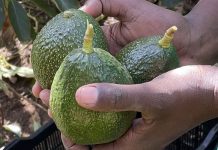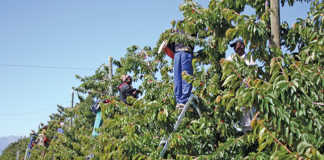
The global dairy industry is regarded as one of the fastest-growing in the world, with consumption of flavoured milk singled out for good growth in particular. But despite drought in the US in 2012 and unexpected dry and hot conditions in New Zealand in the first quarter of 2013, prices are expected to remain flat in 2013.
According to the SA Milk Processors’ Organisation (Sampro), global climatic conditions played a decisive role in the production of raw milk and dairy products, and in prices, but in the absence of significant new developments it was “realistic to expect that the prices of dairy products in the international market in the rest of 2013 will be lower than in April 2013, but higher than in 2012”.
According to Sampro CEO Alwyn Kraamwinkel, this mirrored the findings of the Organisation for Economic Co-operation and Development Food and Agriculture Organisation of the UN (FAO) Agricultural Outlook 2011 to 2020, which stated that prices in this decade were predicted to rise in nominal terms, but in real terms stay flat, although well above levels of the previous decade.
Jacqueline Rowath, agribusiness professor at Waikato Management School in New Zealand, said: “Although the average growth rate for this decade was projected to be only 1,9% per annum – down from 2,1% the previous decade – the majority of growth was expected from developing countries.” She was speaking at the recent Large Herds Conference in Durban.
In SA, retail demand for eight out of nine dairy products tracked were higher in the year ending March 2013 than the previous one, Sampro said in its May report on key market signals.
“The increased retail demand was, to a significant extent, at the expense of price. Four of the eight products experienced increases lower than the inflation rate and one of the products experienced a price decrease from March 2012 to March 2013,” said Kraamwinkel.
Demand for dairy products in SA was highly dependent on the economic growth rate. “The labour and political unrest has already resulted in a reduction in the expected economic growth rate. This situation can harm the demand for dairy products and the opportunity to pass higher costs on to increased prices. However, a return to higher economic growth offers exciting growth opportunity for the SA industry,” he said.
Retail demand for long-life or UHT milk experienced a sharp rise year-on-year, although the price increased less than that of fresh milk, and the inflation rate. Demand for flavoured milk in SA in the year ending March 2013 was 7,9% higher, while demand for white milk was more or less constant. “The increased demand for flavoured milk is the result of the manner in which the variety available meets the needs of different segments of the market. One example is increased awareness of the nutritional value of flavoured milk for people involved in sport,” Kraamwinkel said.
New research from Tetra Pak in Switzerland predicts that flavoured milk consumption will grow at more than double the rate of white milk globally between 2012 and 2015. Flavoured milk is the second-most widely drunk liquid dairy product (LDP) after white milk. Tetra Pak forecasts that demand will increase by 4,1% annually, rising from 17 billion litres to 19,2 billion litres, while white milk will grow by 1,7% from 208,5 billion litres in 2012 to 219,5 billion litres in 2015. Total LDP demand is set to grow by 2,4% from 280,3 billion litres to 301,3 billion litres.
Dennis Jönsson, Tetra Pak CEO, said demand would be driven by developing countries, amidst new flavours health-focused and products focused on health. “With white milk increasingly commoditised, flavoured milk offers dairies the opportunity to provide value to consumers,” said Jönsson. Seven of the world’s top 10 flavoured milk markets are developing countries; China is the largest.











